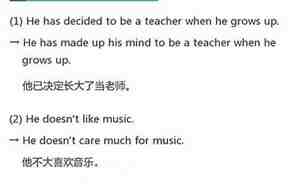表达要求的英语句子

Title: Navigating Technology for Seniors: A Step-by-Step Guide to Embracing the Digital Age
Introduction:
In today's fast-paced world, technology has become an indispensable part of our daily lives. With a staggering 52% of adults aged 65 and above now using smartphones (Pew Research Center, 2021), it's more important than ever to bridge the digital divide for our elderly loved ones. This article aims to provide a concise and accessible guide, designed specifically for the tech-savvy seniors, to ensure they can confidently navigate the digital landscape and reap its many benefits. By sharing practical tips and real-life examples, we'll empower our seniors to communicate, stay connected, and enhance their quality of life in the digital age.
Section 1: Embracing the Smartphone
Start small: Begin with devices, like basic mobile phones, if needed. Many offer large buttons and user-friendly interfaces.
Familiarize with basic functions: Learn how to make calls, send texts, and use the camera, as these are core functionalities.
Section 2: Internet and Email
Sign up for a basic email service: Gmail, Yahoo, or Outlook provide easy-to-use webmail platforms.
Use search engines: Google or Bing can help find information on a wide range of topics.
Section 3: Staying Connected
Join social media: Facebook, Skype, or WhatsApp allow video calls and messaging with friends and family.
Online safety precautions: Teach the importance of password protection and avoiding scams.
Section 4: Smart Home Devices
Smart assistants like Amazon Alexa or Google Assistant: learn to control lights, play music, and set reminders.
Internet of Things (IoT) devices: Smart thermostats or security systems can simplify daily tasks.
Section 5: Online Shopping and Banking
Online shopping: Amazon or Walmart offer seamless shopping experiences, starting with searches.
Secure online banking: Familiarize with online banking platforms and recognize phishing attempts.
Conclusion:
Technology may seem daunting at first, but with patience and guidance, it can become a powerful tool for enhancing our seniors' lives. By breaking down these concepts into easily digestible steps, we can empower them to embrace the digital world and unlock its endless possibilities. Remember, the key is to start small and build on experiences, ensuring that our seniors feel confident and connected in the modern era.
References:
Pew Research Center. (2021). Smartphone ownership among adults aged 65 and older. [Online]. Available at:
表示要求的英文单词
"Request" is the English word that can be used to indicate a requirement, whether it's a personal demand, a formal ask, or a need for information. In different contexts, it may be expressed as "request," "requirement," "demand," "ask," or "request for." For instance, "I request your assistance," "The project has specific requirements," or simply "Can you please provide this information?"
英语中表示要求的词有哪几个
在英语中,表示要求或请求的词有很多种,根据具体情况,选择可能会有所不同。以下是一些常见的词和短语:
1. Request: 请求或要求,比如 "I would appreciate a request."
2. Demand: 强烈要求,比如 "They demanded fair treatment."
3. Request for: 对某事的具体要求,如 "Request for assistance."
4. Inquiry: 询问或查找信息,如 "I need an inquiry about the product."
5. Submission: 提交或请求提交,如 "Please submit your proposal by Friday."
6. Demand: 直接要求,如 "He demanded a refund."
7. Requestion: 虽非正式,但有时用于轻松或友好的场合,如 "Requestion to join the party."
8. Demandation: 少用词汇,强调强烈要求,如 "The contract had several demanding provisions."
9. Appeal: 请求或上诉,如 "An appeal was made for more funding."
10. Request to: 常用于正式信函,如 "Request to schedule a meeting."
以上词汇和短语在不同的语境和正式程度中都有使用,选择时要考虑具体情境。